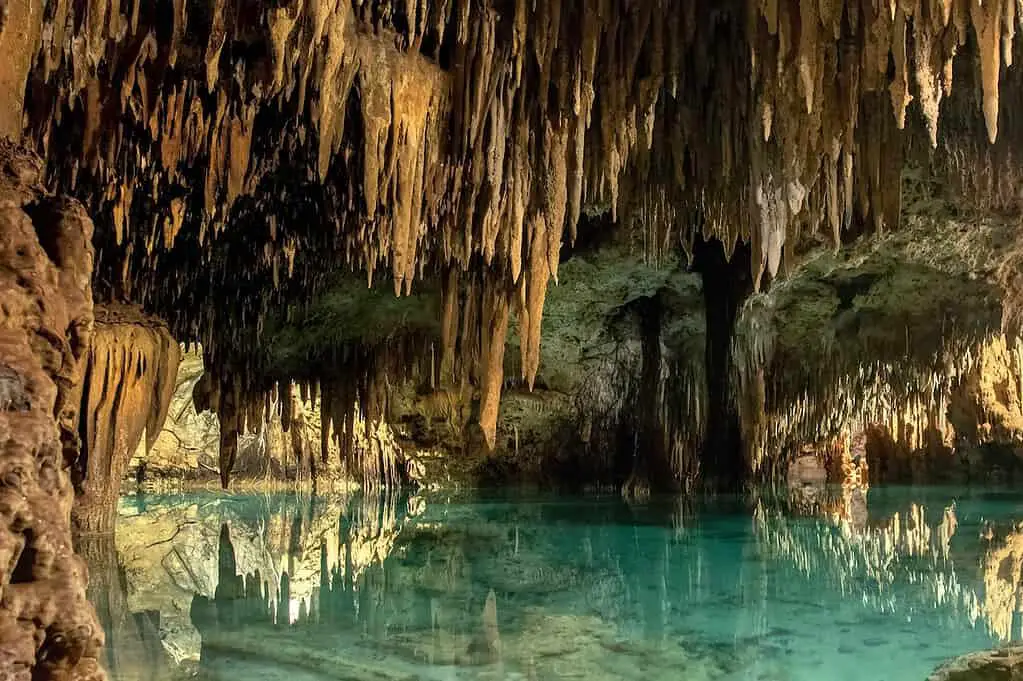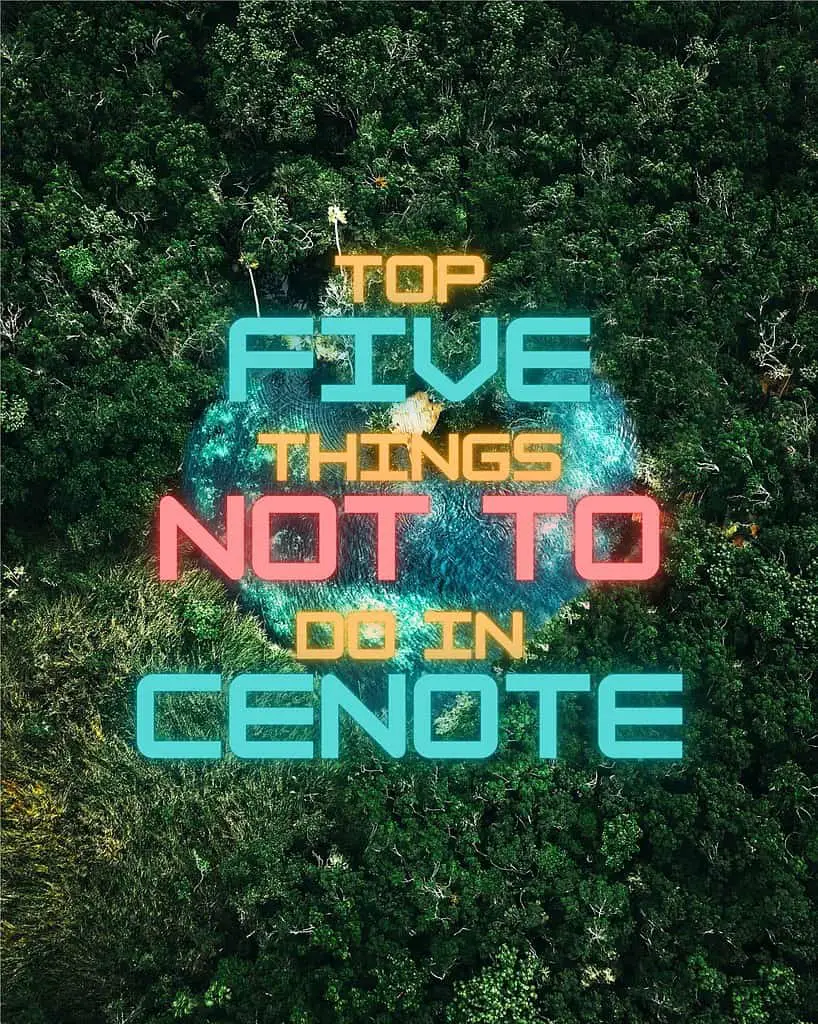Now,
Let’s take a dive into the history, and yes, the pun was intended.
Cenotes have been around since before there even was a “modern civilization” in Mexico.
Going all of the way back to the impact of the Chicxulub meteor. There isn’t too much history to go oven then, but it does explain how cenotes were formed. Check out this article if you want to learn more on how they were formed https://juntosjourneys.com/the-meteoric-origin-of-cenotes/
Shameless plug-in time! I love discovering and sharing new wonders. If you’re a fellow journeyer, you need to get in on this. Join me and Francia in our weekly newsletter packed with fresh blogs, amazing tips, epic history, and exciting discoveries. And guess what? You get a free International Travel Checklist when you sign up. Travel hassle-free. Don’t wait, jump on board!
Subscribe to our newsletter!
Also, don’t forget to check out the beginning of this massive series I’ve been working on. It’s all about cenotes, and you will become an expert after you’re done reading. Discover the must-see spots, learn the intriguing history, and get all the insider tips and tricks. Perfect for travel buffs and history enthusiasts alike! Ready to dive in? (insert link)
For now, we will cover the history and significance of Mayan and Mexican culture, and boy, there is a lot to cover, so let’s journey together!
Table of Contents
Cenotes And Mayan Culture
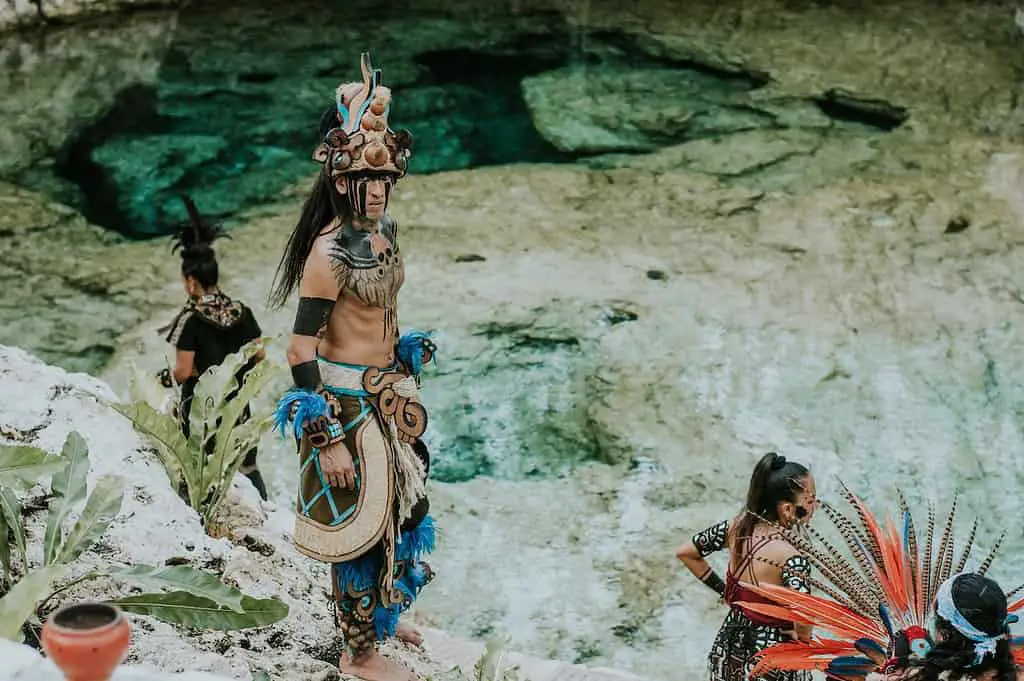
As mentioned in another blog part of this series, the original word for cenote was Dz’onot. This means deep well, loosely translated, and well; who could argue with that analogy they can be deep and they’re a well, right?
But did you know know that they were also seen as a gateway to the underworld?
Gates To The Rain God Chaac
Yep, If you think about it, before the time of scuba gear and things of that nature. The Mayans were never really able to see where these “deep wells” went or came from, only that they were deep and full of water.
So what does this mean? They thought the cenotes were connected to the underworld. Does that mean they avoided them? Well, no they respected them more for it. Believing it to be connected to their god of rain, who was named Chaac, pronounced *Chahk*.
Human Sacrifice And The Cenotes
As you may or may not know, the Mayas were known for their practice of human sacrifice.
Though they weren’t as prolific as the Aztecs with sacrifice. They would still perform them on special occasions such as weddings of the royals, wars, harvest, and when a new king was appointed.
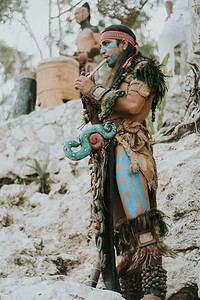
A lot of these important sacrifices were made during harvest/sowing seasons. This was to bring rain to their crops, which would provide food for the year.
These ceremonies were done at or closed to a deep well.
Once the ceremony was finished, they would “toss” the body of the sacrificed into the well. Now I don’t mean they would toss them.
It’s more likely that their bodies were lowered down in a special ceremonial fashion. But that wasn’t always the case, depending on the social status of the person being sacrificed.
The Dead And The Wells
Apart from sacrifices, there have been many sites that have been found to contain numerous artifacts, including human remains.
These remains were found with no clear signs of ritualistic sacrifices. Leading many to believe that some of the wells were used as burial sites.
Sacrifices In The Form Of Offerings
Now a human’s life would have been considered the ultimate offering. That doesn’t mean that Mayans would stop there. Oh, no, there have been main artifacts of what would be considered of great value found at the bottom of these wells, including but not limited to.
Items Found In Cenotes
| Material | Description | Significance and Use |
|---|---|---|
| Pottery | Jars, vases, pots, etc. | Used for storing food, liquids and as decorative items. Pottery could have been considered valuable and offered to gods in cenotes for various reasons. |
| Jade | A precious green stone | Highly valued by the Mayans for its beauty and toughness. May have been offered in cenotes as a valuable sacrifice. |
| Gold | A precious metal | Though not as common in ancient Mesoamerica as in other cultures, it still had value. Could have been offered in cenotes as a valuable sacrifice. |
| Shells | Hard protective outer coverings of marine animals | Shells were used in jewelry, decoration, and as tools. They might have been offered in cenotes for their significance in Mayan culture. |
| Animals | Various creatures | Animals might have been offered as sacrifices in cenotes as part of religious rituals, possibly to appease gods or for other spiritual reasons. |
These materials were of high value at the time, and some of them are still valuable today. This was a form of personal sacrifice, kind of like how you would through a coin into a wishing well in return for good luck.
They would also preform another form of sacrifice that involved self-harm or blood letting this was considered a step bellow human sacrifices. None the less very important. This practice was normally reserved for the elites among Mayans. Men would use a obsidian knife and pierce their foreskin and thread a cord through while women would do the same but to there tongue.
The goal was to shed blood for their gods. I was unable to find any information that would connect this practice to cenotes. But, one could imagine that this may have been. These where the acts of great desperation for sure. Not to mention a bit gruesome.
Video Going Over The Practice Of Blood Letting
Drinking Water For The Mayans
The Mayans relied heavily on the cenotes of Yucatan and would also use them for clean drinking water, being that there are no natural above ground rivers that flow through the geography.
In a lot of cases, these wells were their only source of water. They would collect the water directly from cenotes for drinking, cooking, and other domestic uses such as bathing, watering crops, or water for animals.
Cities And Navigation
The Mayans were also known to build their cities and settlements around or close to cenotes. Proving their value to support the people of the time.
It’s no wonder they were seen as a sacred place.
Back in the times before maps, people would often have to use landmarks to be able to navigate. The Mayans had a rich and complex network of trading with local and even international reach.
They did this by establishing landmarks. Can you guess what they would frequently use? Yep, Cenotes, I’d imagine that it would go something like this “once you see this holy well then take a left walk 1 days time until you see the other well keep straight and you will see this city”.
That’s just me; I love to think about things like that.
A Well-th Of Medicine
Something that is not talked about much is the value that these places had.
The Mayans had a functional understanding of medicine, such as herbs, infection, and even minerals.
They also understood that some of the wells were rich in minerals that were beneficial, leading to the belief in healing properties if people were to bathe in them.
The Mayans would have sought relief from a variety of ailments by bathing in the mineral-rich waters of cenotes. While specific ailments cannot be confirmed with certainty, based on the general knowledge of Mayan medicine, they could include:
- Skin Diseases: Given the minerals found in cenote waters, the Mayans might have believed they could help treat various skin diseases or infections.
- Rheumatic Diseases: Conditions like arthritis that cause chronic pain and joint inflammation could have been treated by immersion in the mineral-rich waters.
- Wound Healing: Bathing in cenote waters could have been believed to speed up the healing process of wounds or burns.
- General Wellness: The act of bathing in these sacred waters might have been seen as a means to cleanse the body and spirit, promoting overall wellness.
- Stress and Anxiety: The ritualistic aspect of bathing in the sacred cenotes could have provided psychological relief, reducing stress and anxiety levels.
Something to remember is that Mayans though advanced their medical knowledge was of the holistic view, they saw a strong connection between the physical, spiritual, and natural worlds.
Therefore cenotes being of such spiritual significance makes sense why they would believe that these places were able to heal them as well.
Mayan Building Materials
While cenotes themselves were not a direct source of building materials, the surrounding areas would have been rich in limestone.
This type of stone was used for many things. If you have ever been to a temple, you know this very well.
Uses included housing, streets, aqueducts, temples, art, and even their game in which they would use a ball, called “Pitz”.
They also used the water for plaster and mortar mixing that was used for building temples and other structures.
*Fun Fact:

The Mayan game called Pitz was played with a rubber ball. These balls were made from latex that was harvested from trees generally by the Olmec *considered the mother culture of Mesoamerican civilizations*
Cenotes and Mexican Culture
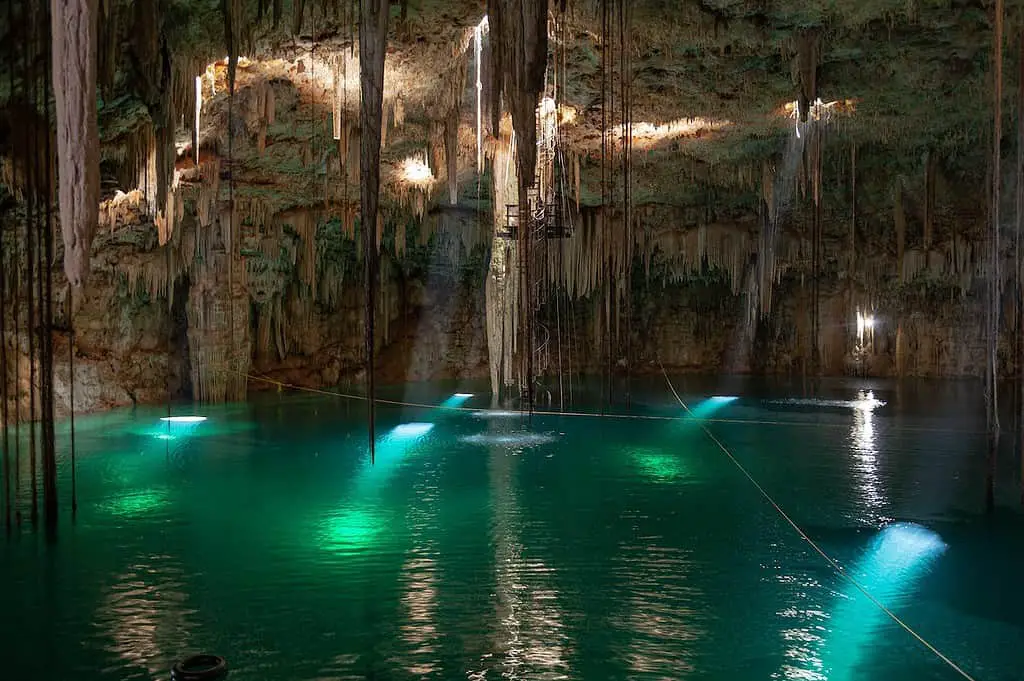
The culture of these wells isn’t as whimsical or fantasy as that of the Mayans. That is not to say that there isn’t any culture around them.
There have been countless archeological projects to further explore cenotes, under the Mexican authorities they have revealed more valuable artifacts and attempted methods to empty and clarify the water.
To this day, the largest cultural influence for the country is the large amount of tourism that they bring. This is for activities such as swimming, diving, and even kayaking. I go into a lot more depth about this in this article. You have to check it out! (insert link)
So How Big Is Tourism In Mexico?
Well? Tulum, for example, receives more than 300,000 tourists per year alone, and many of them visit cenotes. Given the thousands of cenotes in Mexico and their popularity among tourists.
It’s not unreasonable to estimate that maybe several million tourists visit cenotes in Mexico per year. However, let me add a disclaimer, this is just an estimate, and the number could be higher or lower. Nonetheless, it’s pretty amazing.
Locals And Cultural Significance
There are many locals to this day that still uphold the historical and cultural significance that the past holds, as well as their natural beauty.
Type of Gathering/Events
Mexicans hold some cultural events and gathering around cenotes, such as:
| Type of Gathering/Event | Description |
|---|---|
| Traditional Mayan ceremonies | The Mayan people consider cenotes sacred and hold traditional rituals around these water sources, which can include blessings, healing rituals, and offerings to the gods. |
| Community Gatherings | Communities use cenotes as gathering places for social events and celebrations, ranging from local festivals to informal gatherings for swimming and picnicking. |
| Environmental and Conservation Events | Cenotes have large ecological significates and often become focal points for environmental awareness campaigns and conservation efforts. |
| Wellness and Spiritual Retreats | The otherworldly nature of cenotes makes them ideal locations for wellness retreats, including yoga sessions, meditation retreats, and spiritual workshops. |
| Weddings | Some couples choose to have their weddings near cenotes, utilizing the unique and beautiful backdrop that they provide. |
| Adventure Sports | Guided swimming, snorkeling, diving, and even zip lining events are often organized around cenotes due to their natural formations and clear waters. |
Going down in History

To wrap things up these popular swimming spots seem just like another marvel of nature. But as we just learned they are so much more and have a rich and deep history spanning 1000s of years. Both providing and taking from the people that relied on them.
To this day there is still so much that we do not know about them and their significance. This is why they are still a popular topic among scientific communities. Weather that involves finding new cenotes or even new artifacts in them, keeping the waters clean and safe, or driving tourism. History is still being made daily.
These sink holes are truly amazing and deserve the place that they have carved out of history and the earth.
Thanks for journeying with me guys!
Before you go, remember to explore the other articles of this awesome series that I’ve put together. Dive into everything about cenotes – and guess what? You’ll turn into a cenote whiz by the time you’re done reading. Spot the coolest places, uncover the things not to do, score all the best tips and so much more. If you love traveling or history or all of the above, this is for you! So, are you set to jump in? (insert link)


